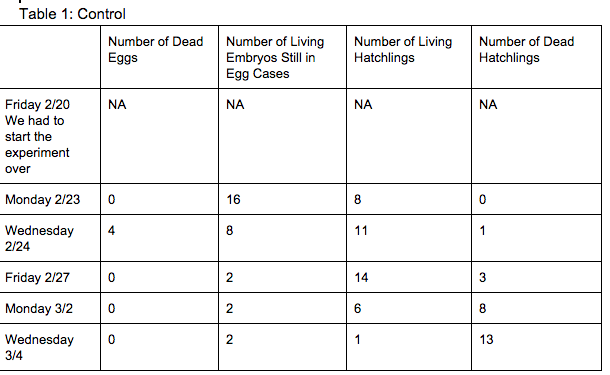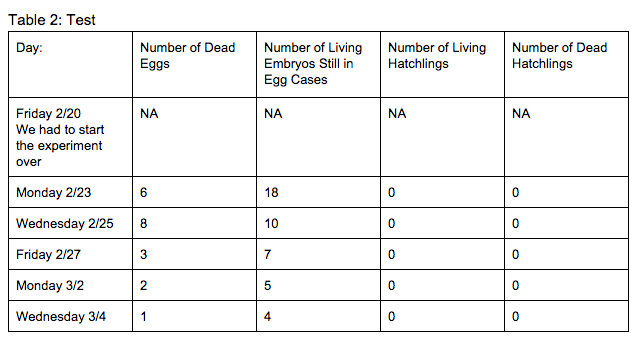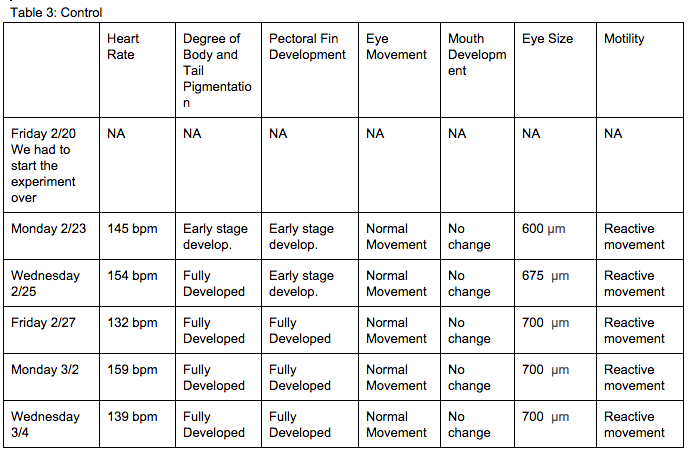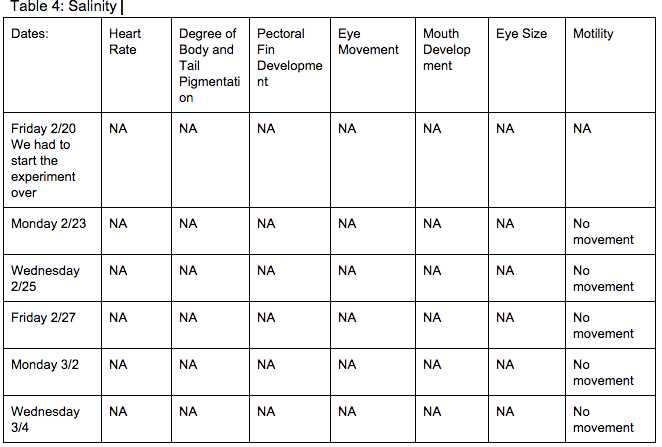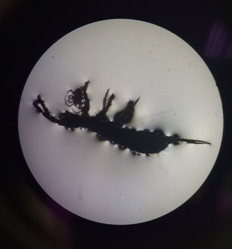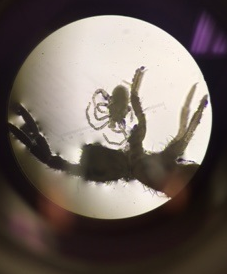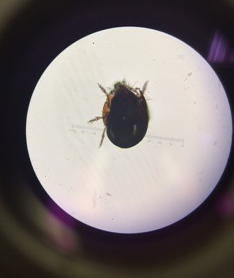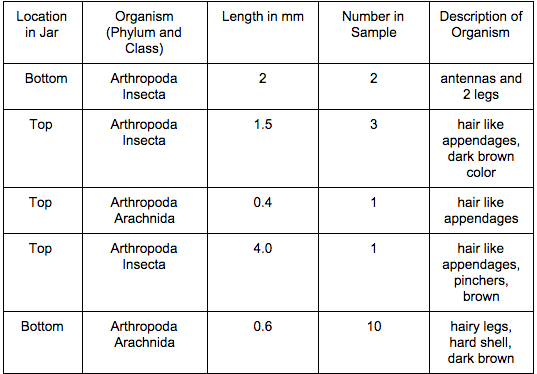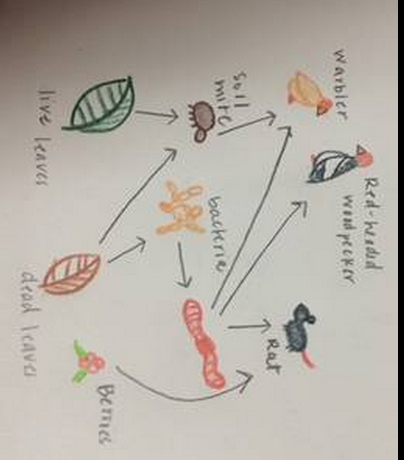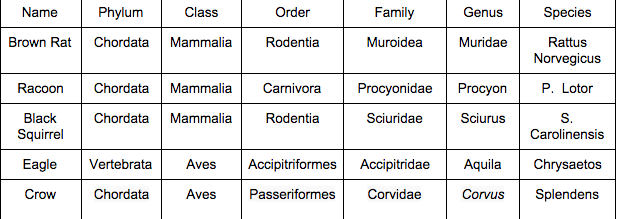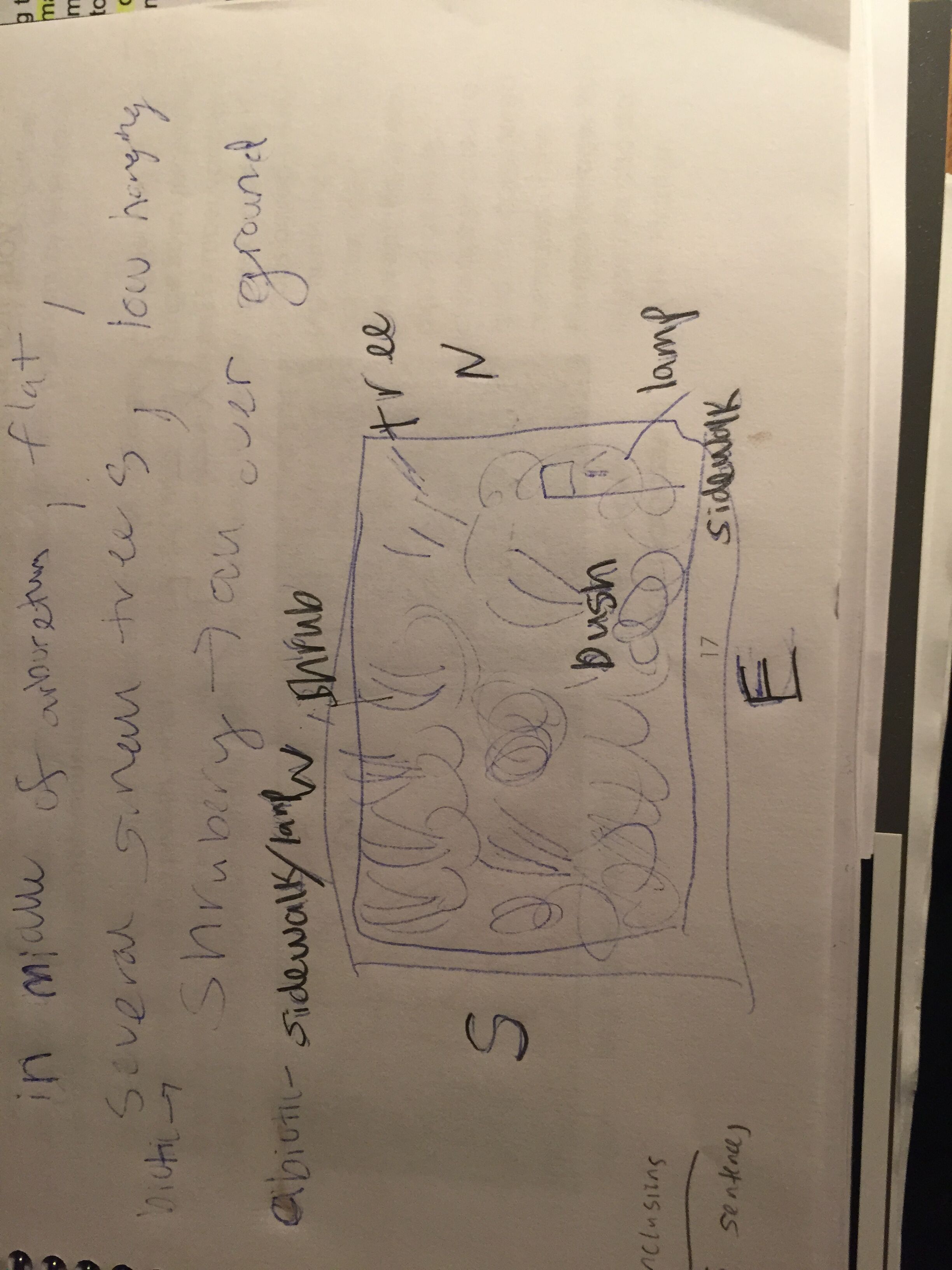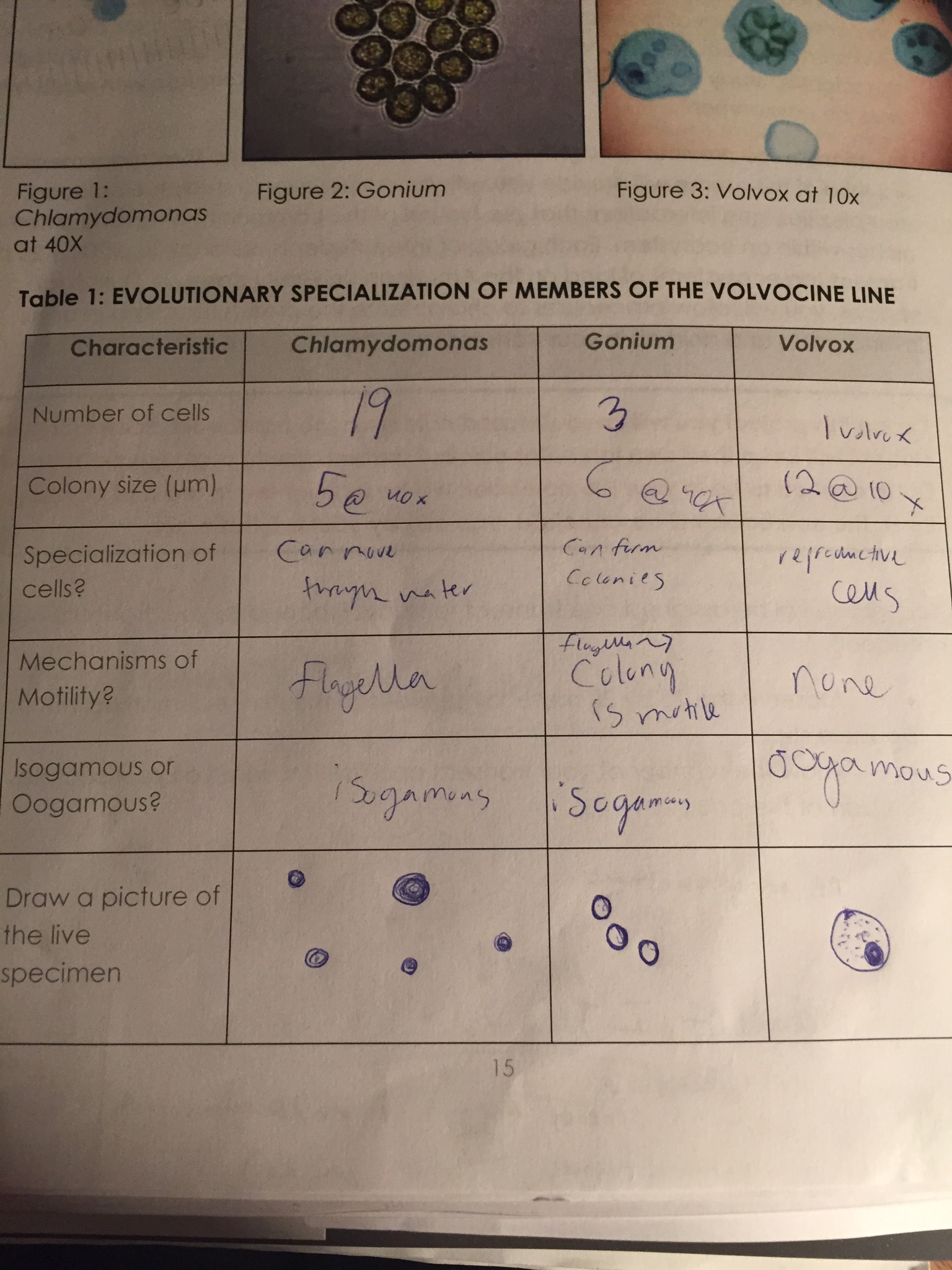User:Isabella Jorgensen/Notebook/Biology 210 at AU
"Zebrafish, February 20 - March 4th 2015"
Introduction
The purpose of conducting this experiment was to learn about the different stages of embryonic development and to study the effects of environmental conditions on the development of embryos. In this experiment we tested the effect of salinity, or the presence of salt in the water which is known to greatly affect embryological development. To test the effects salinity has on the development of embryological development, Zebrafish (Danio rerio) were used as a test subject. By exposing the zebrafish to a 2% salt solution, the embryological process will be affected. While a 4% salinity exposure is detrimental to embryonic survival, the exposure to 2% salinity should slow down the process, not stop it.
Materials and Methods
Begin by selecting a published paper about a certain environmental effect on zebrafish. From this paper determine a hypothesis and experimental plan. Then begin setting up the experiment by preparing the control group and the test group. Select two covered petri dishes and add 20 mL of Deer Park water to one and 20 mL of 2% salt solution to the other. Procure 20 healthy and translucent eggs and add them to each dish. Then organize a schedule of times to observe the growing embryos and create a chart to put the data collected from the observations in. Make the proper observations for the first day of the experiment, these include counting the number of dead eggs, living embryos inside eggs, living hatchlings, and dead hatchlings. Following day 5, observe a hatched zebrafish and embryo on a depression slide under the 4 x objective and observe the following. The degree of body and tail pigmentation, eye movement, heat rate, pectoral fin development, yolk sac size, development of bladder, development of mouth, and general movement. On day 5 of the experiment remove 10 mLs of water and any empty eggs. Replace the removed water with 25 mLs of clean fresh water or salt solution. If there are any dead eggs save them in paraformaldehyde. Then on day 7 remove 5 mLs of water and any dead eggs and replace the removed water with 5 mLs of clean water or salt solution. Then between days 7 and 14, remove 5 mLs of water or salt solution and any dead eggs and replace the removed water or solution with 10 mLs. Also after day seven begin adding one to two drops of paramecium to the petri dished once the water has been changed. On day 14 make the final observations in the experiment. Collect all surviving embryos and zebrafish and place them in the aquarium. Then dispose of the contents of the petri dishes and of the dishes in the appropriate tanks.
Results
This table contains the observations about the embryos, fish survival, and hatchings in the control petri dish.
This table contains the observations about the embryos, fish survival, and hatchings in the test salinity petri dish.
This table contains the observations made under the compound microscope for the control group.
This table contains the observations made under the compound microscope for the test salinity petri dish.
Conclusion
The purpose of this experiment was to understand the effect of salinity on the embryonic development of zebrafish. The results from this experiment are rather interesting, as the first day of data was not usable because of the mold on the outside of the embryos that forced the students to restart the experiment on the second day. The results from the control were stable with what other scientific studies concluded; however, the test group gathered interesting results, as the embryos appeared to be alive, yet none ever hatched. This is due to the fact that an increased salinity slows down the growth process in zebrafish embryos. The experiment was ended before any of the embryos in the salt solution could hatch; however, if this experiment had been conducted over a longer period of time they would have been able to. Thus, increased salinity effects the rate of embryological development in zebrafish.
"Invertebrates, February 17, 2015"
Introduction
The purpose of this experiment is to understand the importance of invertebrates and about their complexity. It is also to learn about how the simple organ systems evolved into more complex systems. As there are 14 different phyla of organisms, and over a million species within each phyla, there is much diversity. All invertebrates have three types of tissue, ectoderm, endoderm, and mesoderm. In order to observe different types of invertebrates, and to understand the different complexities of them, the students have to observe the acoelomate planaria, and the pseudocoelomate nematode. Five different invertebrates also have to be identified from the different transects and observed. The invertebrates are all taken from the soil collected from the transect and are all most likely to be arthropods.
Materials and Methods
To perform this lab begin by observing and describing the movements of three types of worms. Then relate how their body movements relate to their body structures. Following, collect five invertebrates from the Berlese Funnel by breaking it down and gently pouring the top 10-15 mLs of liquid into a petri dish and selecting five invertebrates from within the debris. Using a microscope observe the 5 invertebrate samples and identify the class of Arthropoda invertebrates using an online key. Classify them by measuring the length of each organism and by observing their physical characteristics. Following use the textbook and identify five groups of vertebrates that might inhabit the transect. Then determine the classification of each of the vertebrates starting with phylum through species. Then construct a food web based on all the groups of organisms found in the transect.
Results
Spring-tail (Arthropoda Insecta)
Mite (Arthropoda arachnida)
Soil Mite (Arthropoda arachnida)
This table has the results from the five invertebrates found in the soil collected from the transect.
This is the food web our group created that depicts all of the organisms and suspected wildlife in our transect.
Conclusion
The results gathered from this experiment resulted in a vast array of arthropoda invertebrates. By observing these different species, the life within the transect is better understood. By going farther than observing invertebrates from within the soil samples in the transect and predicting hypothetical vertebrates that could live in the transect a better understanding of the life within the transect. Constructing a hypothetical food web based off of the invertebrates and vertebrates within the transect also helped to better understand the complexities of life systems.
Plants and Fungi, February 10, 2015
Introduction
The purpose of this experiment is to understand the different characteristics of plants and the diversity within them, along with the function and importance of fungi. All plants can be generalized by three general features: presence of vascularization, presence of specialized structures, and mechanisms of reproduction. The major groups of plants include non-vascular, seedless, gymnosperm seed, and angiosperm seed plants. In this experiment, five different samples of plants will be collected from the different transects across AU's campus and observed and classified. When observing each sample the size, shape, location in transect, vascularization, specialized structures, and mechanisms of reproduction must be noted. The mechanisms of plant vascularization in bryophytes are measured by the veins within the plant, the xylem and phloem which are responsible for the transportation of water in the plant. The mechanisms of specialized structures are measured by the cuticle, a thin waxy layer on the outside of leaves, the stomata, which are specialized pores that allow CO2 to enter the plant on the underside of the leaves. The mechanisms of plant reproduction are characterized by either the gametophyte (haploid) or sporophyte (diploid) stages of the life cycle, which all plants alternate between.
Materials and Methods
To perform this experiment, five different plants must be selected from the transect. Capture a picture of each plant in the transect and describe the location and the type of each plant in great detail. The observations from each plant can be put into Table 1. Back inside the laboratory, characterize each plants vascularization, record their height, shape, and size putting all of this information in Table 1 as well. Following, observe any flowers or seeds found in the transect. If there were any, determine whether they are dicots or monocots.
Results
File:Screen Shot 2015-02-10 at 8.19.52 PM
Table 1 describing the 5 plant samples found in the transect.
Conclusion
The main purpose of this experiment was to learn about the different characteristics of plants and the three general features of these plants. The data collected from the observations thus widened the students knowledge about the different life forms found in their transects.
January 25, 2015 Biological Life at AU
Introduction
The purpose of this experiment was to collect different forms of life from different ecosystems on AU's campus and to observe the biodiversity within each transect. The reason each student was to observe different ecosystems on campus was to give them a general idea of how biodiversity works on a small scale so that they could apply what they learned to a larger scale. The study of ecology, which focuses on how different organisms and species relate to one another is the overarching theme for this experiment as each transect represents a small ecosystem in which the biotic and abiotic organisms are unique to their location in time and space. To examine the effects of evolution, the students observed several members of the green algae group in the Volvocine line. Through observations they were looking to observe the workings of natural selection and the three main mechanisms, variability, heritability, and differential capacity for survival and reproduction.
Materials and Methods
To perform the first half of this experiment three different members of the Volvocine line, Chlamydomonas, Gonium, and Volvox were needed to view under the microscope. Each student then had to count the number of each type of cell, calculate the size of the colony, determine whether is was isogamous or oogamous (isogamy is sexual reproduction of like gamete while oogomy is sexual reproduction of unlike gametes), determine the specialization and mechanisms of each cell, and to draw a picture of them. For the second part of the experiment the students were placed in groups of three and were assigned transects of the dimensions 20 by 20 meters in different parts of the AU campus. Following each group was to take note of the transects topography and location. The groups were also to draw an ariel view of the transect, labeling it thoroughly including north, south, east and west. The students were each given a 50 mL conical tube to collect a soil sample as well. Once back in the lab each group made a Hay Infusion culture with their soil samples. To make the Hay Infusion each student had to place 10-12 grams of soil into a plastic jar with 500 mLs of deerpark water. Following, they had to add 0.1 gm of dried milk. Once this was added they had to gently mix the contents of the jar and clearly label the jars lid.
Results
The first picture depicts the ariel view of the transect. The general descriptions of the topography and location were also included in this picture. The second image is of the Volvocine Table, which includes all of the observations made about the three members of the Volvocine family.
Conclusion
While the two components to this experiment differed greatly they were shared the central theme of evolution. While the transect/hay infusion do not directly correlate with evolution, the study of the bacteria within these transects gives a better look into what evolutionary steps were taken. Studying the three volvocine members before extracting the soil samples and conducting the hay infusion was useful in gaining a background understanding of the three members were related to each other, how they differed, and how evolution is what lead to these differences. IJ
test AP Test
